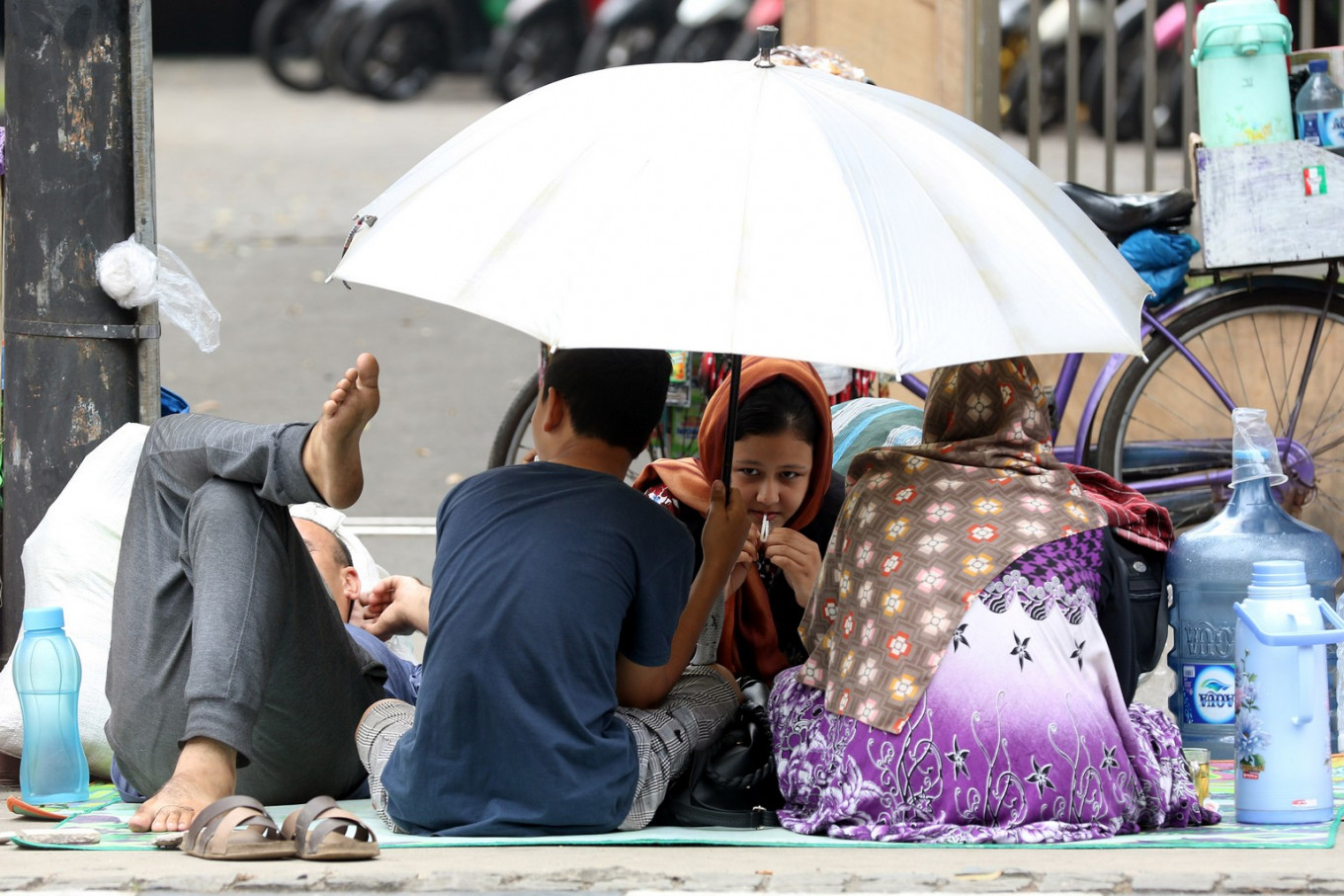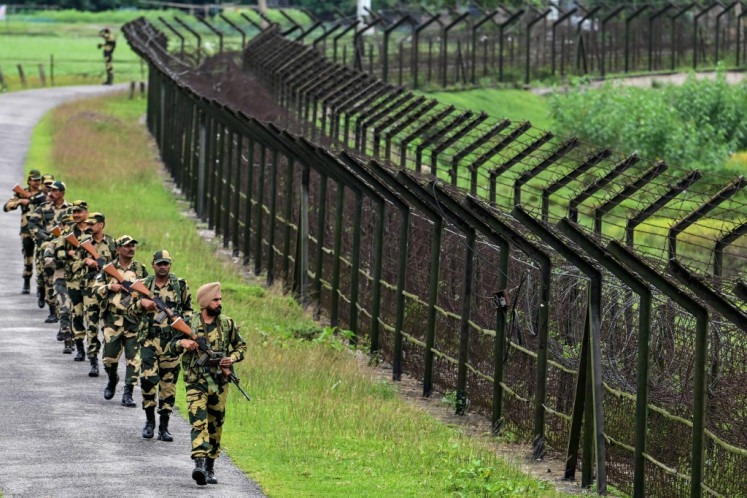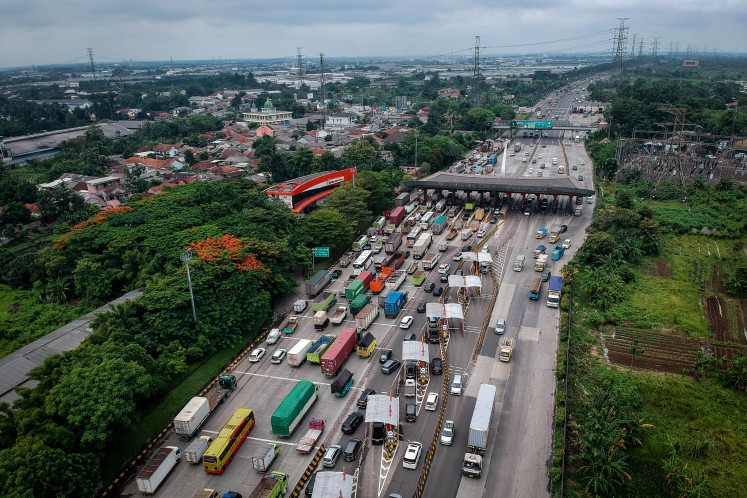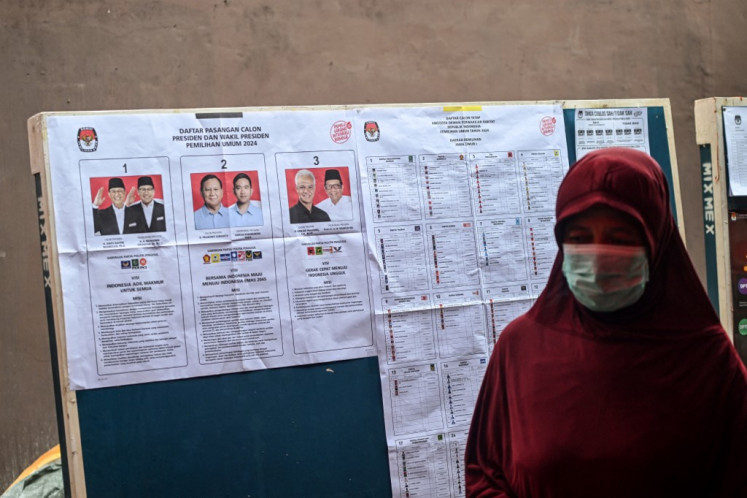Popular Reads
Top Results
Can't find what you're looking for?
View all search resultsPopular Reads
Top Results
Can't find what you're looking for?
View all search resultsSilent struggle of refugees in Indonesia
Change text size
Gift Premium Articles
to Anyone
W
e’ve all heard about the refugee crisis — people escaping war-torn countries, immigrant families being separated, parents risking life and limb to provide a brighter future for their children — but how much do we really know about what’s happening, especially here in Indonesia?
Refugees are individuals who are forced to flee their country because of persecution, war or violence. A majority of them come from Afghanistan, Syria, Yemen, and Iraq — where their lives were endangered, their freedoms jeopardized and their human rights violated. Because of their religion and/or ethnicity, they’re treated like second-class citizens in their own homes, faced with symptoms of conflict-induced internal displacement such as violence, discrimination, severe poverty and political instability.
Zahra, a 14-year-old refugee from the Afghan ethnic group Hazara, describes her time as a young girl in Iran before coming to Indonesia with her parents and three brothers. Forced to migrate because of the Afghanistan war, she immediately began facing discrimination from locals in her new neighborhood in Tehran.
“Because we are Afghan refugees, we weren’t allowed to wear better clothes [than the people in Iran], or else we’d get beaten, even killed. We weren’t allowed to buy a car or have credit cards. When I went to buy bread, they would burn it first before giving it to me,” Zahra recalls.
Read also: International refugees in Indonesia explained
The decision to leave home is never an easy one. It’s a long and terrifying journey across oceans; each rickety, overcrowded boat carries around 40 people (many of whom can’t swim) desperate to escape the horrors of their homeland. Children tremble with fear as they abandon the only home they’ve ever known; nights are spent cold and hungry, wondering if they’ll ever get to see their loved ones again.
Once asylum seekers arrive in Indonesia, with little to no belongings, the United Nations High Commissioner for Refugees (UNHCR) begins an identity verification process. Indonesia has yet to ratify the 1951 Refugee Convention and its counterpart 1967 Protocol, thus the government authorizes the UNHCR to carry out its refugee protection mandate.
Registered asylum seekers then have their claims for refugee status assessed, and if granted they will be assisted by the UNHCR for resettlement to a third country, voluntary repatriation, local integration in the country of asylum, as well as temporary stay measures to help grant them access to self-reliance opportunities such as university scholarships and labor migration schemes.
According to the UNHCR, there are 65 million internally displaced people all around the world; 25.9 million have fled their homes seeking refugee status (half of whom are under the age of 18), and Indonesia has opened its doors to a mere 14,000 of them.
While some reside in small houses arranged by the migration agency or in refugee camps, many, including pregnant women and children, have been left stranded. They have pitched tents, sleeping bags and mosquito nets across the UNHCR’s headquarters on Jl. Kebon Sirih, where they remain today until their refugee status is assessed.
A majority of the refugees setting up camp were previously housed in the Kalideres Immigration Detention Center, but their only option was to take to the streets following declining support from the Australian government and the International Organization for Migration.
Most refugees come to Indonesia with the hope of being permanently resettled elsewhere, often in America or Australia, but increasingly stringent immigration policies, massive underfunding and a lack of resources to sustain the influx of newcomers have left them stuck here in limbo, with no money, no legal right to work and unable to access public services or obtain citizenship. They now rely purely on external organizations such as the UNHCR, and community-driven programs such as the Roshan Learning Center, an informal school for refugees in South Jakarta where I teach.
Unfortunately, their inability to access health services and a lack of basic medical knowledge has proven detrimental: a student I taught at Roshan had unknowingly contracted tuberculosis after a week of severe coughing, and died the following week.
The UNHCR reveals that respiratory infections, malaria and intestinal worms are the top three diseases among refugees, along with measles, diarrhoeal diseases and malnutrition. This vulnerability is further exacerbated by overcrowding, resource scarcity and a lack of hygiene education — not to mention the very real trauma and psychological health problems for which they receive no counseling.
Because community health centers (Puskesmas) are off limits to them, allowing able-bodied, working-aged refugees to work could be an alternative for families of those in urgent need of medical attention (although many fall in this category), as they would be able to afford private health care. In addition, this would alleviate the strain on resources, as self-sustaining refugees would be able to fulfill their basic needs and even contribute to the Indonesian economy.
However, by not being a signatory to the 1951 Refugee Convention, the Indonesian government continues to deny refugees their right to work. It insists that the refugees’ stay here is merely transitory, even though this period is a vital part of their rehabilitation, and is just as crucial in their migration journey as arriving at their end destination.
It appears their only option is to put up with their circumstances — perpetually disenfranchised from Indonesian society and at constant risk of death and disease — or to brave the perilous journey back home, where they would face more adversity.
Amid the overcrowded boats, the tuberculosis outbreaks and the scores of families sleeping on the streets of Kebon Sirih, a glimmer of hope persists in the few who are lucky enough to get the chance of emigration.
After staying in Indonesia for four years, Zahra has recently resettled in Canada. The rest of her fellow refugee friends will unlikely be as lucky, as most refugees now stay for an indefinite amount of time in what was supposed to only be a few years.
When refugees come to Indonesia, they leave their whole lives behind in lieu of a safer tomorrow; instead, they’re welcomed with forced vagrancy, illness and indifference. As they silently endure this systemic inequality, they’re precluded from living the life that every human being is entitled to: one of freedom, security, happiness and opportunity.
Now more than ever, we ought to feel compelled to help our unlikely neighbors — be it through donating, volunteering or simply educating ourselves and others of what’s going on. Only then will refugees in Indonesia have a real chance at living.
***
High school student at Jakarta Intercultural School. She has been teaching refugees at the Roshan Learning Center for the past three years.











